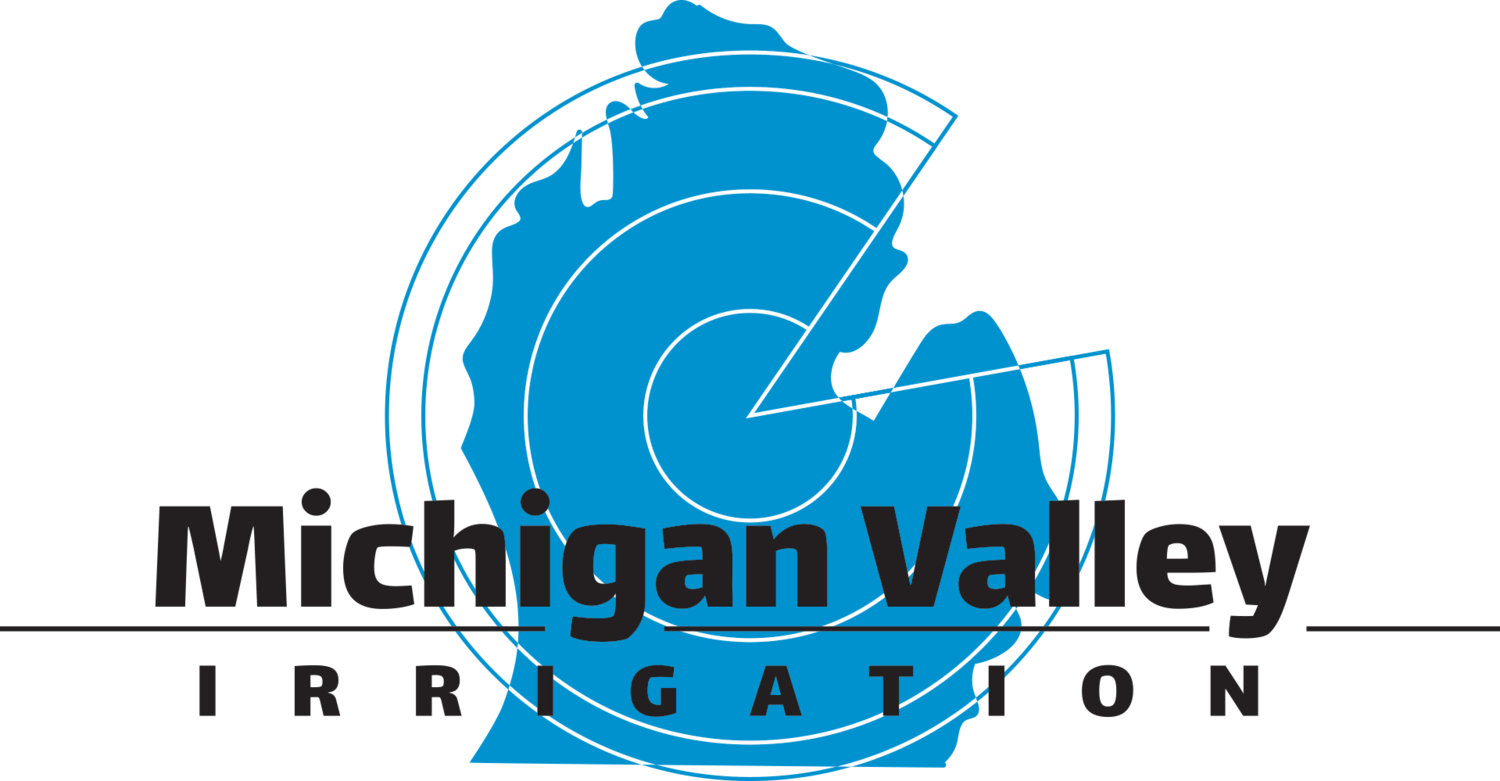Developing Irrigated Acres
Michigan Valley Irrigation has been leading the way in developing irrigated acres in Michigan for over three decades. Yet it feels like we have only scratched the surface. With developing technologies and an ever-growing demand for more food from fewer acres, we must continue to evolve and adapt to serve the needs of our customers and their markets. Weather station input, GPS guidance, variable rate irrigation, continuous movement and remote operation are a few technologies already utilized by the irrigation equipment manufacturers.
The greatest challenge is that every farm has different needs, and every field is unique. By taking an open-minded approach and refusing to give into what may seem like an insurmountable challenge, we strive to find an optimal solution.
Karg Reservoir. No well, stream flow too low for direct irrigation.
Ground zero is usually what are we irrigating. Is there an expected crop rotation? What is the soil type? Where is the parcel located? Is this owned property? Is there public power available nearby and is it single or three phase? Is there surface water readily available? Are there any proximal fields that could be watered with a common water or power source? We are not merely selling irrigation equipment but developing irrigated acres on a farm that can have potential returns for fifty or more years. Yes, we ask a lot of questions. Do you want an efficiently designed project?
If the desired result is a cost effective, well thought out developed irrigated area, we must consider the various pieces and strive to match them together to function harmoniously. If you were to think of irrigated acres as a tabletop, it would have four legs supporting it. The four legs would be: a water source, a power source, the connecting infrastructure, and the application equipment.
Water
The water source could be a surface water withdrawal like a lake, pond, stream, or ditch. If there is not a convenient surface water source, we will likely look for ground water, commonly sourced with a well. Regardless of surface or ground water, steps must be taken through government agencies to have permission for any withdrawal over 70 gallons per minute. We have numerous staff members that can assist with this process. Large ground water withdrawals are best performed by an experienced irrigation well driller, of which we have several contacts.
Power
The most economical power supply is often 480 Volt Three Phase power from the grid depending on location, access to it, and where the pump needs to be located. Technologies such as Variable Frequency Drives (VFDs) make conversion of single phase to three phase power not only affordable, but highly efficient as well. Alternate options are also available to generate power. This is an ongoing expense, so we work hard to keep your operating costs low.
Infrastructure
The third leg under our table is the infrastructure which connects the water and power supply sources to the application equipment. Selecting the most favorable path is an important step. When selecting the size of pipe and wire it is important to understand changes that occur with distance. Water experiences friction losses which results in a drop in pressure. Electricity experiences voltage drop which can ruin your motors. We also consider future expansion of every system. A few dollars spent on upsizing pipe and wire can save thousands on the next phase of a project.
Application Equipment
Center pivot irrigation systems are the preferred option for the majority of our projects, especially for larger fields. We occasionally recommend a linear system, which moves in a straight line as opposed to revolving around a pivot point. Hard hose travelers are more common for smaller or oddly shaped fields. Fixed guns can be used to fill in smaller outer section of fields. Regardless of the type of application equipment, there are still numerous decisions to make. Our experienced sales staff can walk you through the various decision on size, structure, adjustments for topography, unique sprinkler packages, remote management, and weather-related input scheduling.
Conclusion
Once we have completed the design process and learned enough about your operation, we can calculate a return on investment (ROI). There will need to be a few assumptions, such as crop prices. Before we ask for your commitment, you will have an exceptionally good idea on the potential impact of your investment.
An irrigated acre is a long-term investment in your business. It can have a huge impact on the success of your operation. To optimize our yield outputs, we must optimize and control the inputs. Water is the single greatest input needed for any living thing. In Michigan we receive enough water nearly every year, but it is seldom delivered when our crops have the greatest demand. With a well thought out system, we can help mother nature to optimize your production.
The more we know about what you are trying to accomplish and your management goals, the better equipped we are to help you succeed.
For help getting started developing irrigated acres on your farm Call 989-762-5028.
About the Author
Pete is the marketing manager for Michigan Valley Irrigation, having joined the company in 2016. He was raised on a dairy farm in western New York and graduated from Cornell University with a B.S. in agricultural economics. His entire working career of over 37 years has been involved in agriculture. A farmer helping farmers. When away from Michigan Valley he operates, Joyful Noise Farm, a small livestock and produce farm and spends time with his family.









